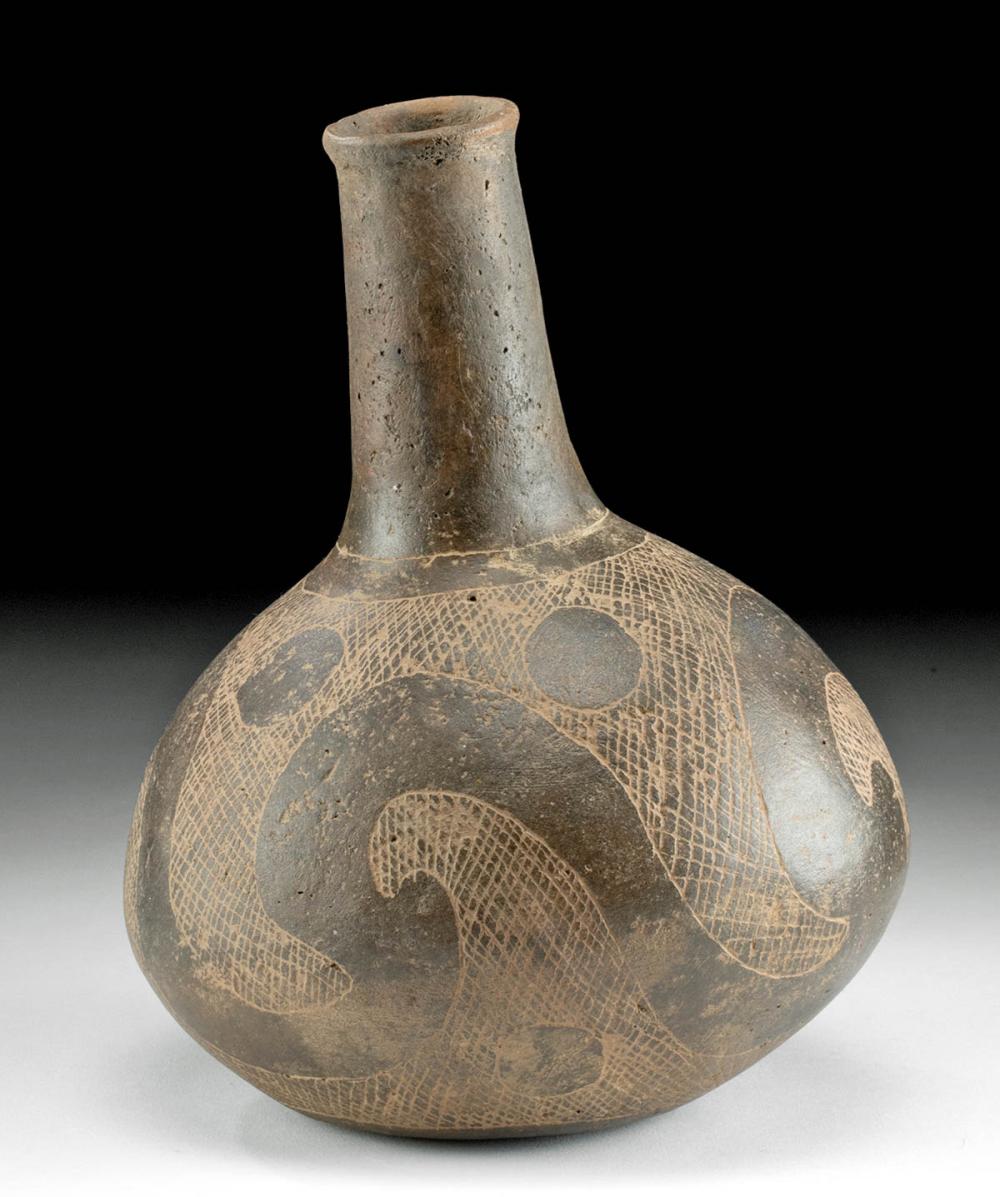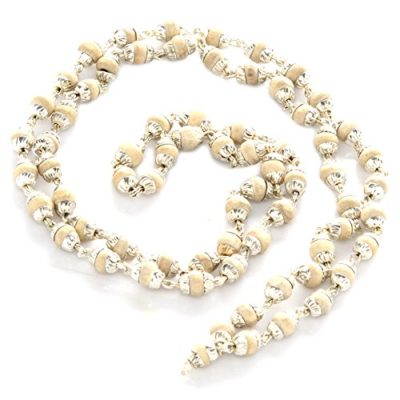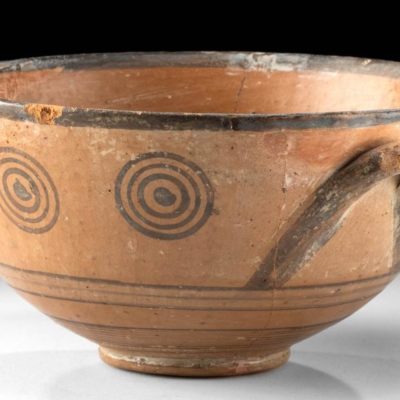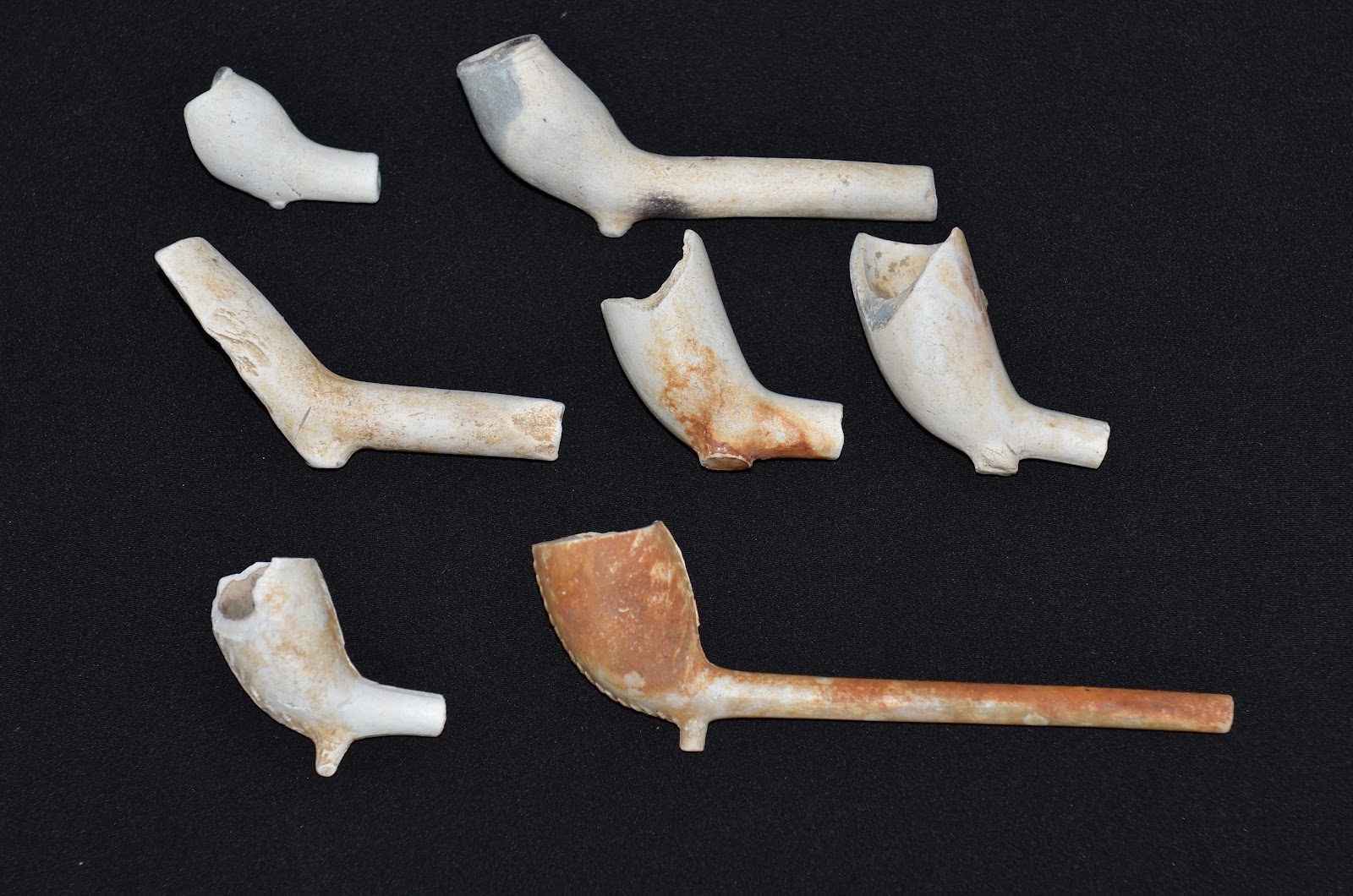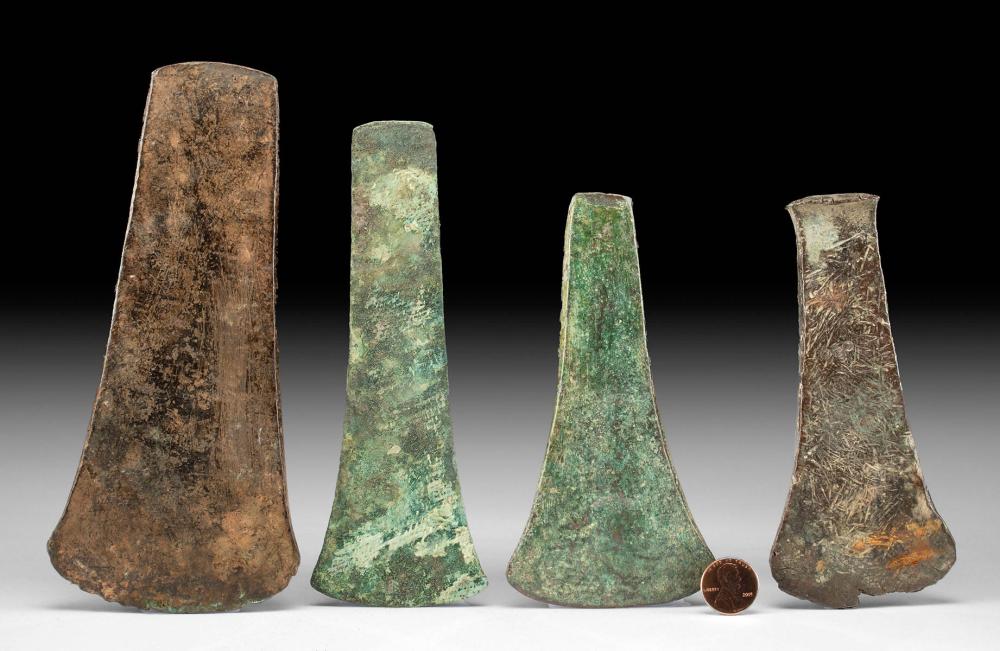The Indians, who are today known as Quapaw, are a Dhegiha Siouan group who migrated from the Ohio Valley south on the Mississippi River to it’s confluence with the Arkansas River (in the current state of Arkansas) sometime within the last few hundred years. Exactly when this occurred is not fully understood but the Spanish in 1541 did note a group of Indians in that region called Capaha or Pacaha. In 1673 the Frenchmen Jacques Marquette and Louis Jolliet traveled from Canada south on the Mississippi River and encountered a group of natives who called themselves Ugaxpa or Upakhpa which is roughly translated as “The Downstream People”. The Illinois Indian guides for the Frenchmen called these natives Akanses, translated as “People of the South Wind”, and that word was adopted as the name of the state. There is some argument as to whether the Spanish actually met the Quapaw and today the best guesses at to when these people moved south is possibly AD 1450-1500 or probably AD 1600-1650.
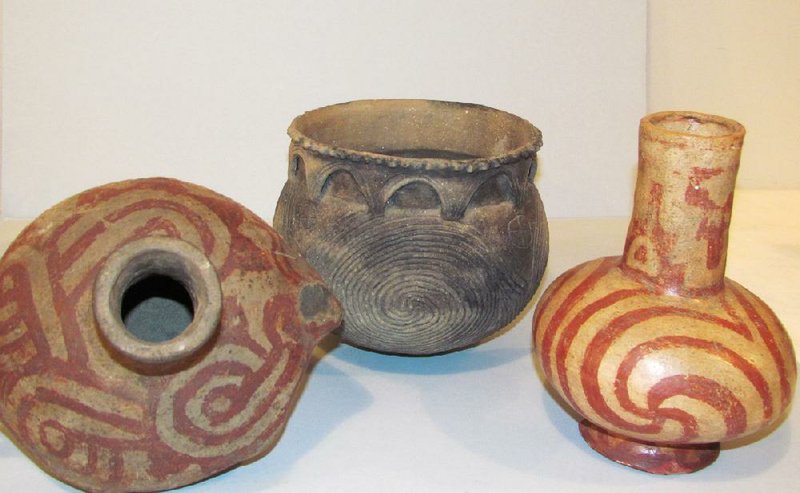
The artifact type that is called the Quapaw Teapot is probably the only American Indian vessel that was copied from a European prototype. The usual shape is a plain globular jar with a spout on one side but there have been a few animal and human effigy forms found. These jars have small rim openings in the top and some hare short applied necks around these openings. They, of course, have the pouring spout but there is no type of handle on the vessel top or opposite the spout, which is somewhat odd since the Indians of that time period made pottery with large looped handles (today called stirrup vessels) on the top of the pots. Many of these vessels have a small node directly opposite the spout that may have been an artistic expression of a handle. They are shell tempered in normal fired colors of grey to black but some were also coated with red clay slip or black, red and white patterned slip prior to being fired.
Now we know something about the Quapaw people and these “teapot” jars but just how did they come about developing this pottery style. Let us examine some facts.
Tea was first imported into Europe from the Far East (probably China) in the first quarter of the seventeenth century AD (1600-1625) but the British became the only European people who came to be major tea drinkers. Coffee was also brought into Europe in the seventeenth century with the good guess time wise as around 1650 and many Europeans including the Spanish and French embraced the new coffee drink. There is no factual evidence to indicate that ceramic tea/coffee pots or iron or brass kettles were developed in the Old World until, at the earliest, sometime during the first half of the seventeenth century.
The Quapaw Teapots most resemble British porcelain teapots but the English colonists did not arrive in the Quapaw homeland until well into the eighteenth century which would have been a considerable time after the manufacture of these unique native vessels was begun. Some writers and archaeologists theorize that the attribution for the vessel style was from teapots carried by De Soto’s men and seen by the Chickasaw Indians in the present state of Mississippi in 1540 or by the Quapaw themselves a year later. This is virtually impossible because, even if the Spaniards did meet these Indians, this date would have preceded the introduction of tea into Europe by at least sixty years. The Spanish probably had no teapot shaped vessels from which the Indians could have drawn inspiration. And also remember that the Spanish were basically coffee drinkers. The French, however, arrived in the region of the Quapaw a half century after the European importation of tea but remember that the French, like the Spanish, were primarily coffee drinkers. Even if these particular Fenchmen were tea drinkers, it is unlikely that would have carried easily broken ceramic teapots with them in such a long and arduous journey into the American wilderness. So, just from where did the Quapaw get their inspiration for these jars? Most probably (though we may never know for sure) from the French brass or cast iron kettles used to boil water for coffee. With that reason in mind, for historical correctness, we should re-name these vessels “Quapaw Copies of French Coffee Kettles or in short, Quapaw Kettles.
REFERENCES:
No Author
“Early American Brass and Copper,
THE SPINNING WHEEL’S COMPLETE BOOK OF ANTIQUES
1972
No Author
ENCYCLOPEDIA AMERICANA
1995
No Author
HANDBOOK OF AMERICAN INDIANS
1905
Hathcock, Roy
THE QUAPAW AND THEIR POTTERY
1983
Manners, Errol
THE CERAMICS SOURCE BOOK
1990
Perino, Gregory
“A Red Quapaw Teapot” ARTIFACTS, VOL 9, ISSUE NO. 2
1979

